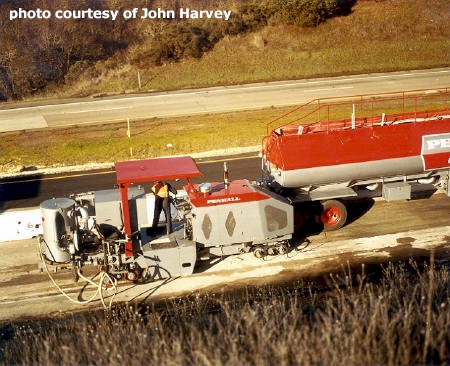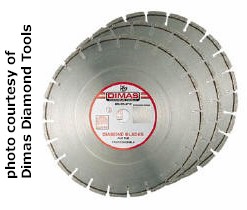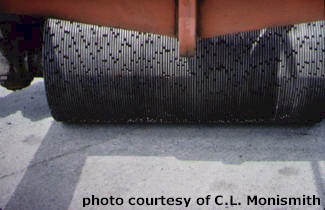Diamond grinding (Figure 1) refers to a process where gang-mounted diamond saw blades (Figures 2 and 3) are used to shave off a thin, 1.5 – 19 mm (0.06 – 0.75 inch) top layer of an existing PCC surface in order to restore smoothness and friction characteristics. Most often, it is used to restore roadway friction or remove roughness caused by faulting, studded tire wear, and slab warping and curling.
Diamond grinding can reduce the IRI of an older pavement to 1.0 – 2.0 m/km (63 – 126 inches/mile).
Purpose
Corrective maintenance. Restores pavement smoothness and frictional characteristics. Can also be used in new construction to attain initial specified smoothness, although properly constructed PCC pavements should not require any diamond grinding.
Materials
Gang-mounted diamond saw blades.
Other Info
Diamond grinding addresses serviceability problems but not their root cause. For example, diamond grinding can substantially reduce the roughness on a faulted rigid pavement, but it will not address the cause of faulting, nor will it prevent roughness in the future as a result of additional faulting.
Because the grinding head is cooled with water, a byproduct of diamond grinding is a slurry of ground PCC particles and water. Most of this slurry is picked up by vacuums within the grinding machine and either deposited along the highway shoulder (in some rural areas) or collected in trucks for disposal.



